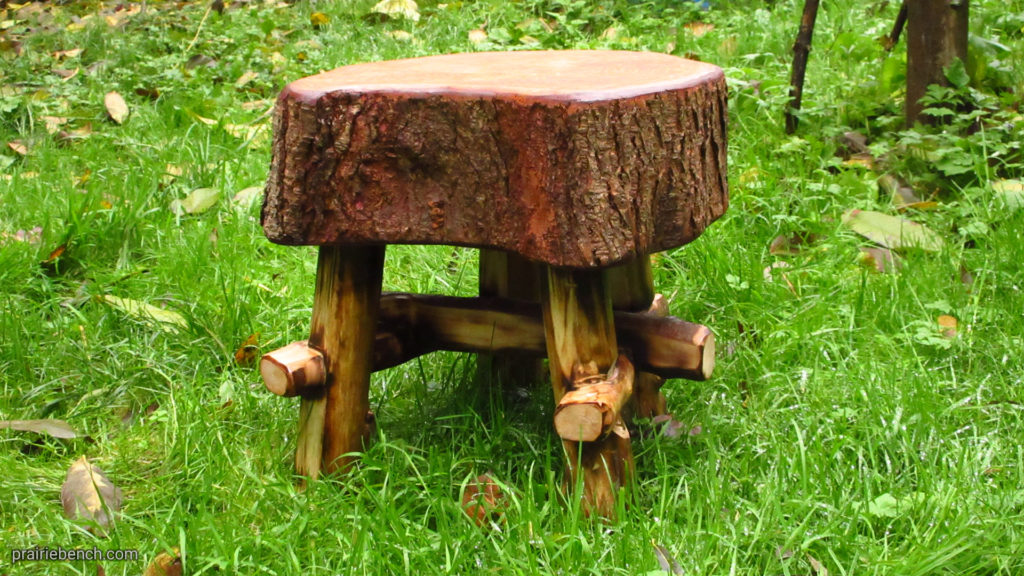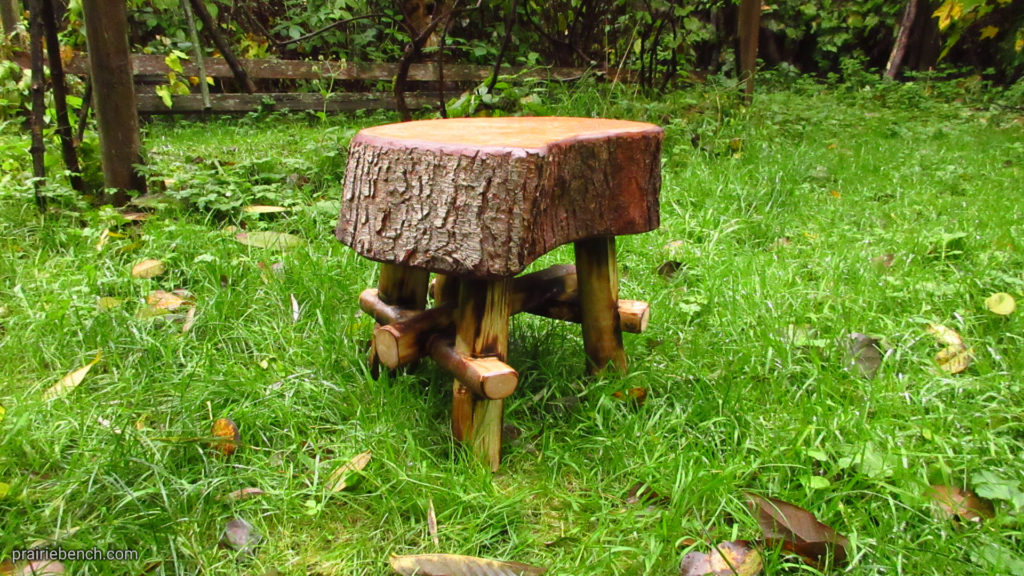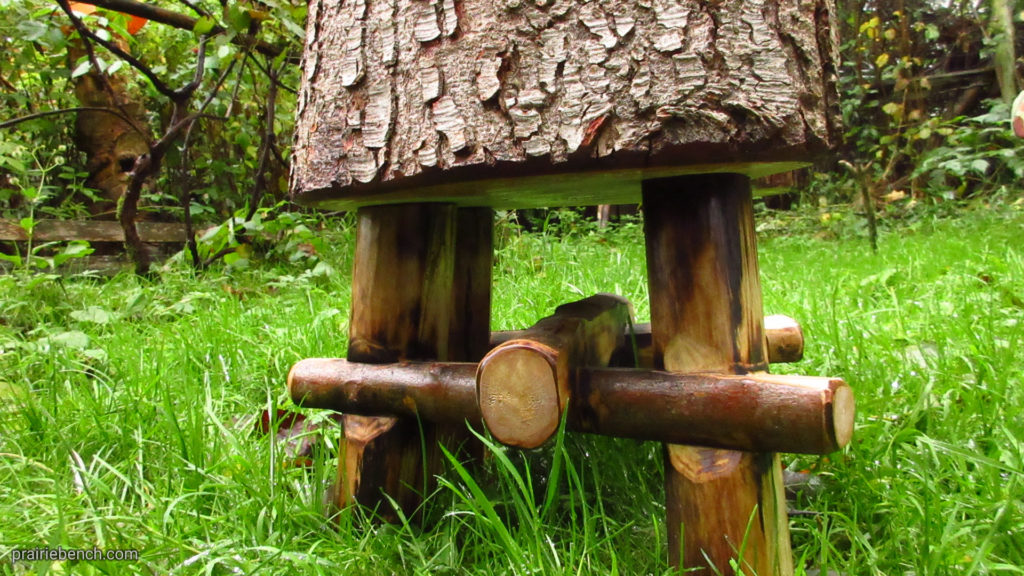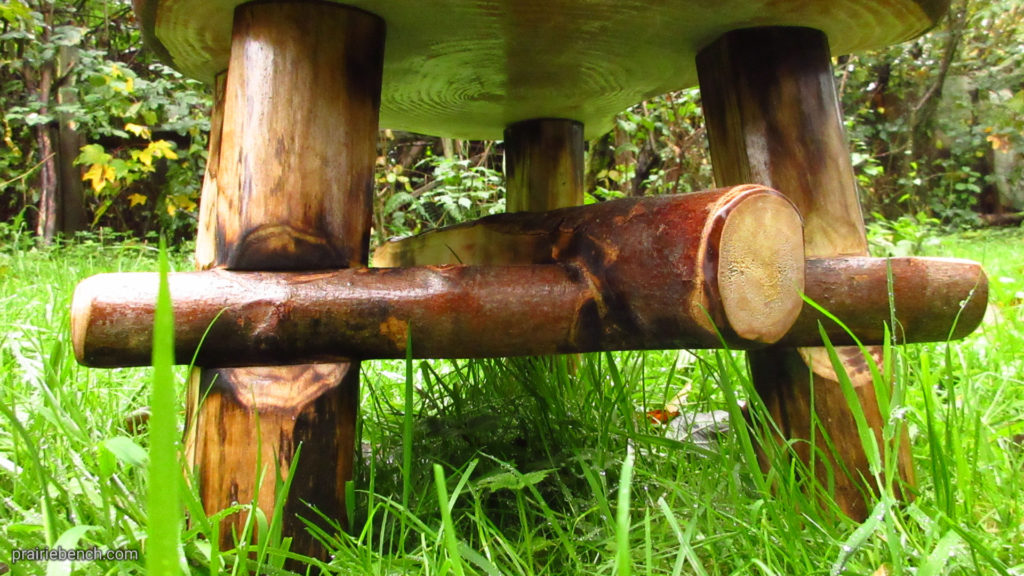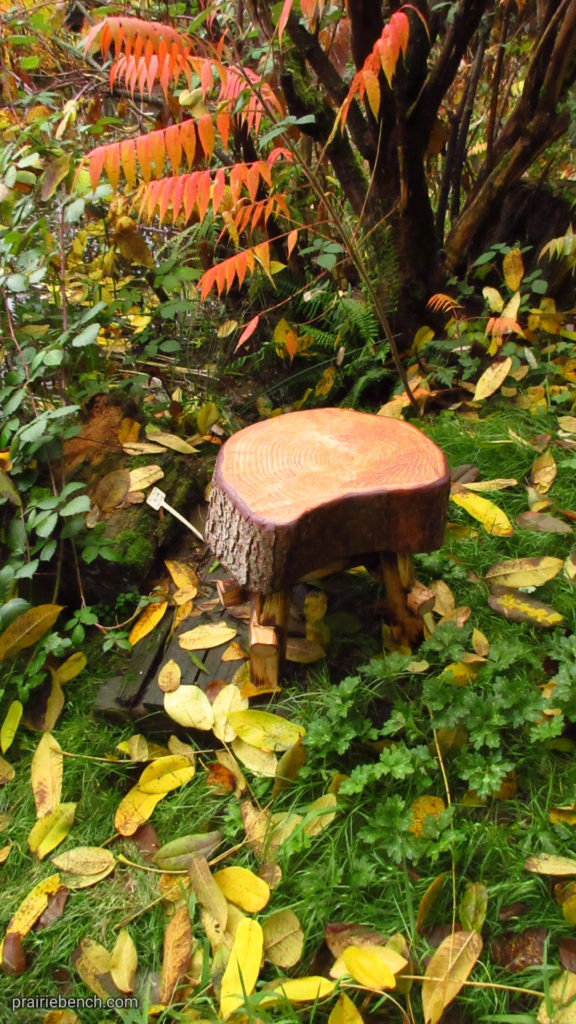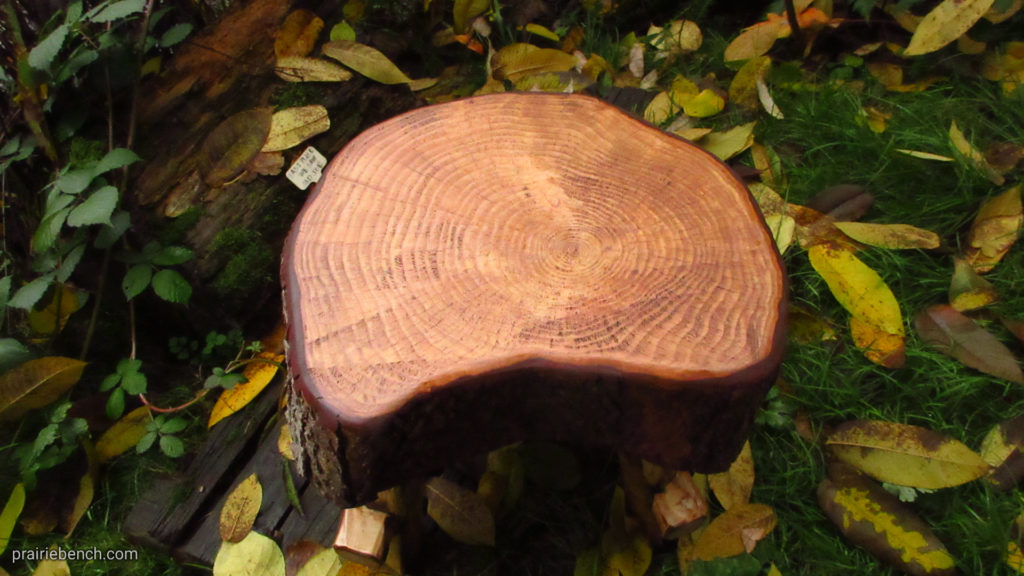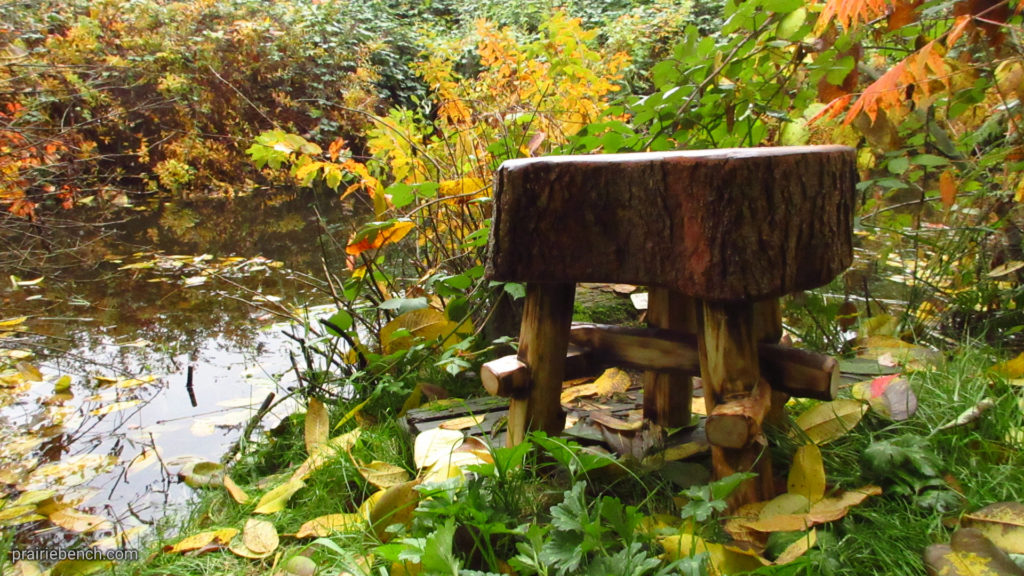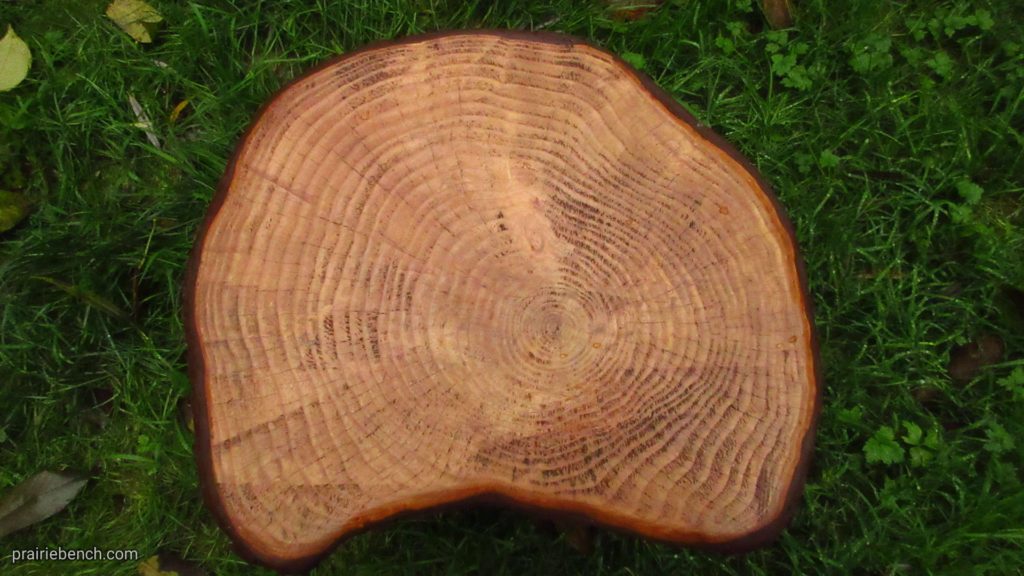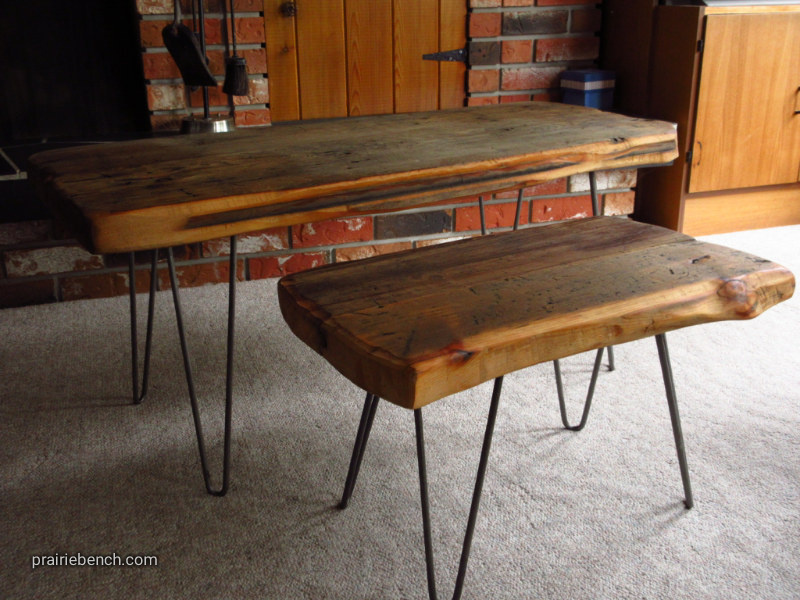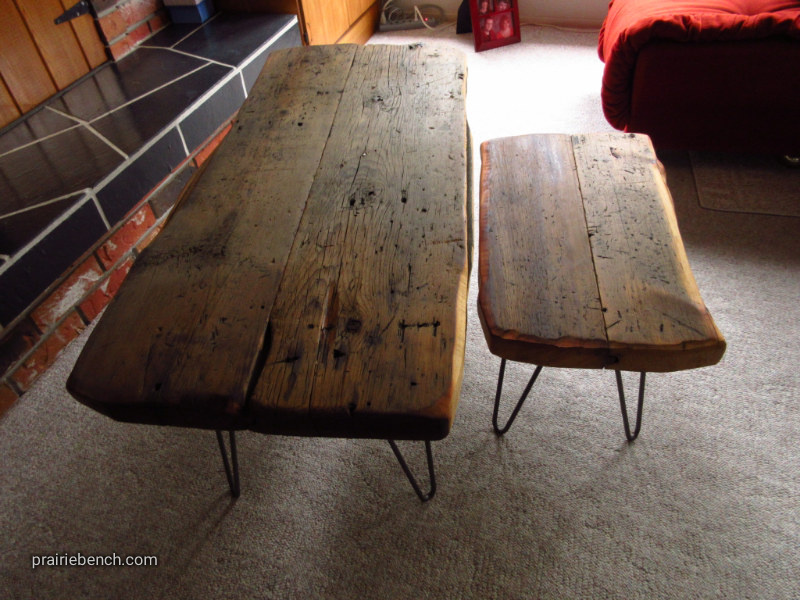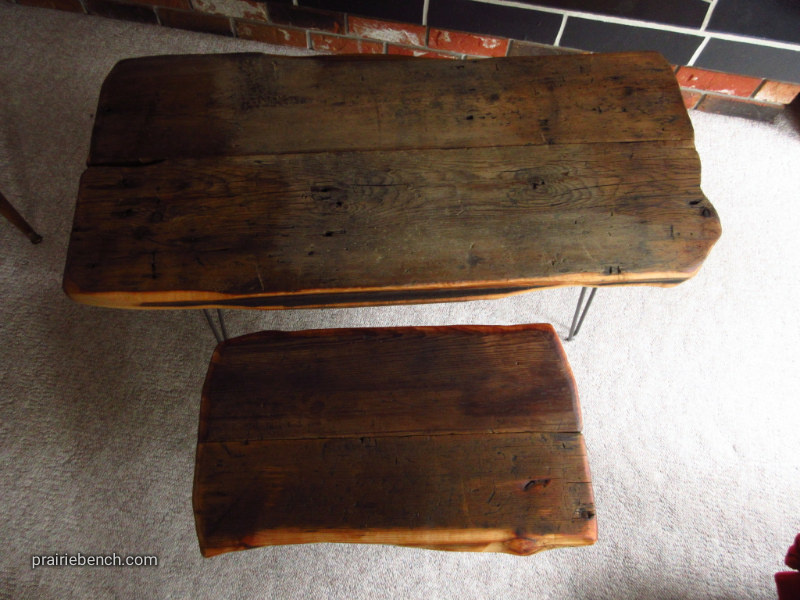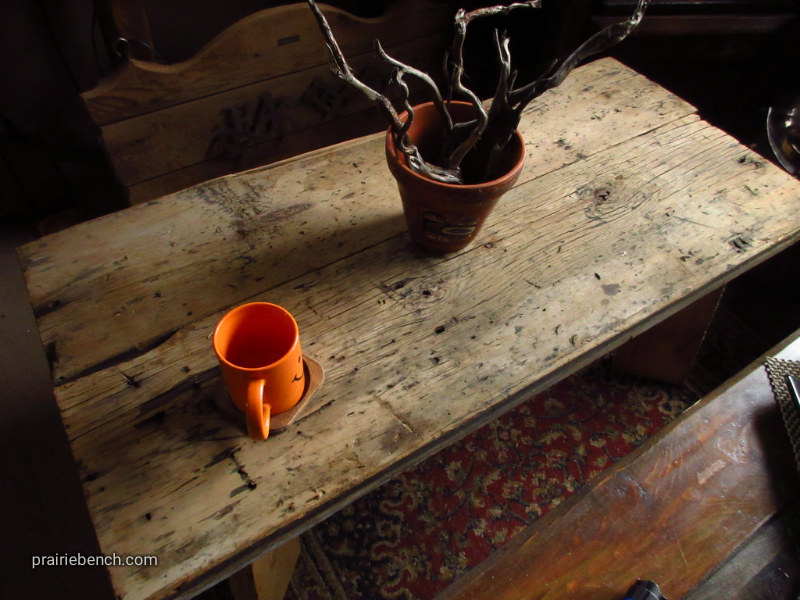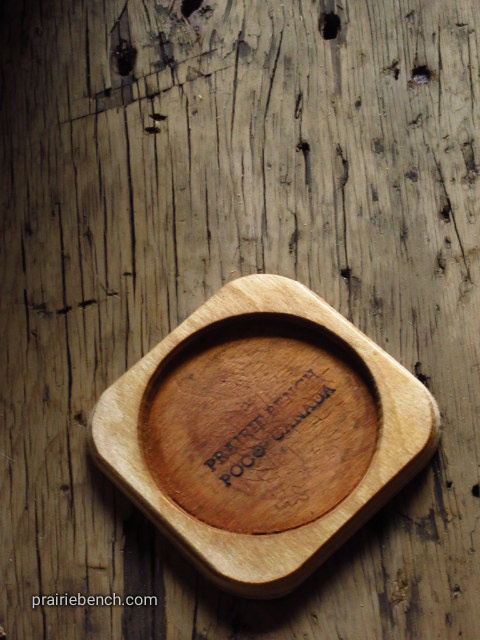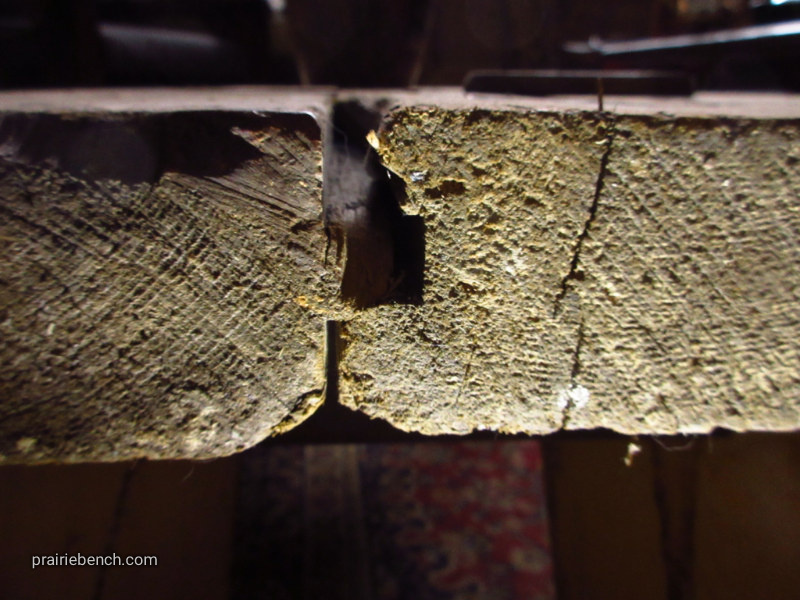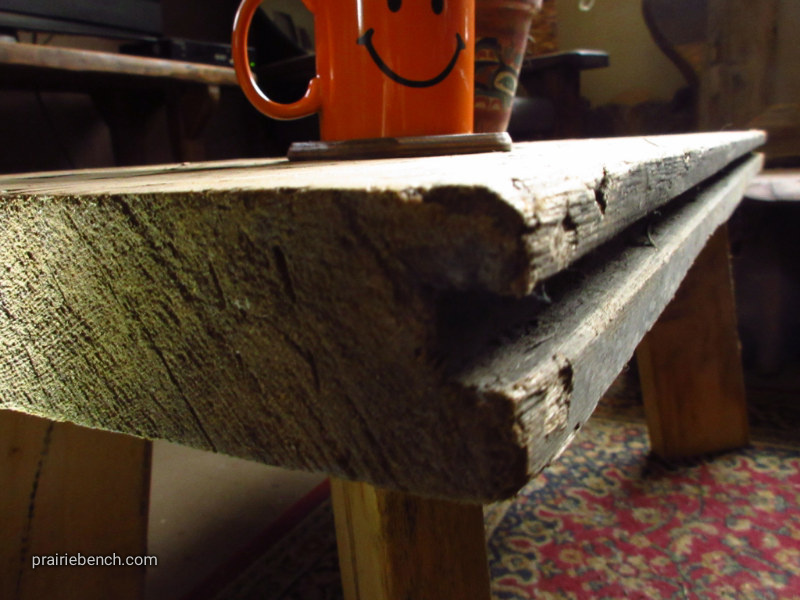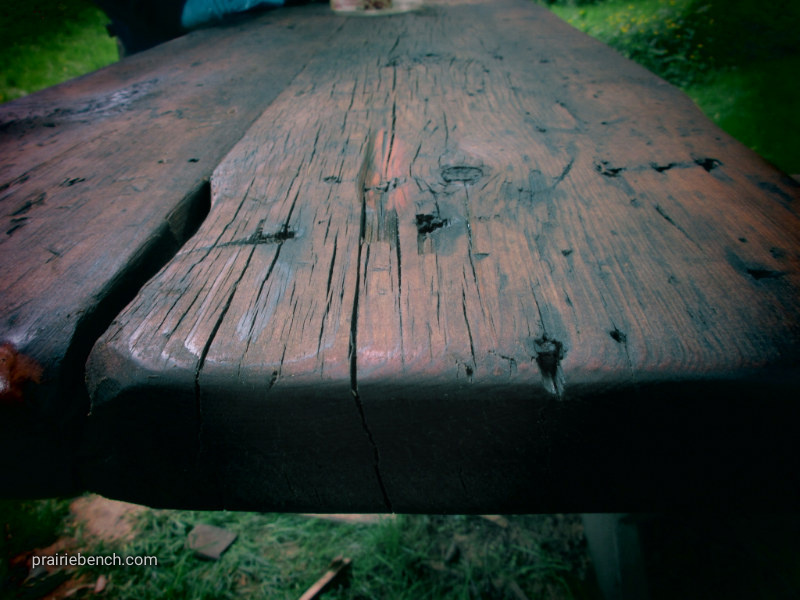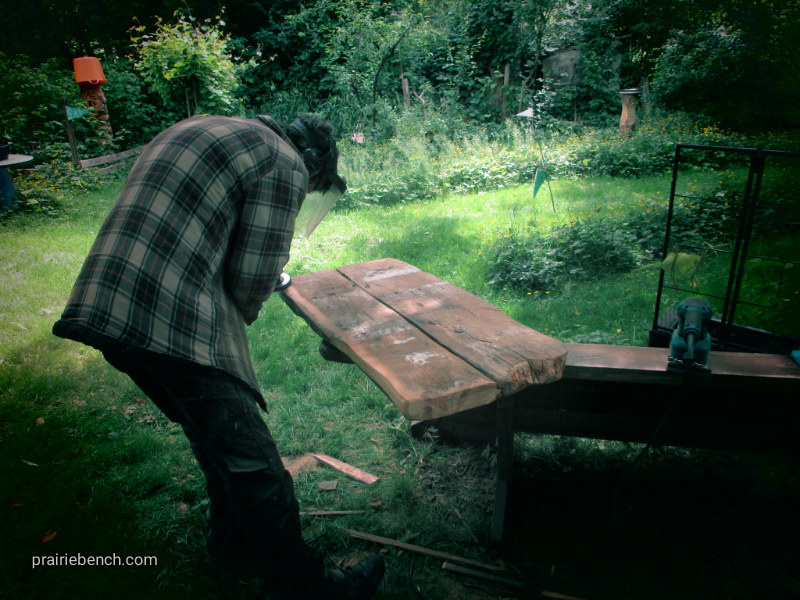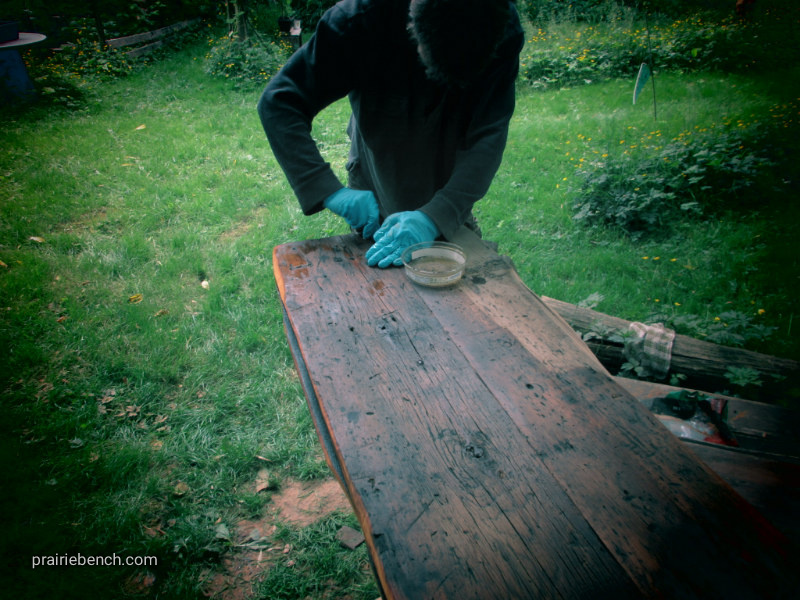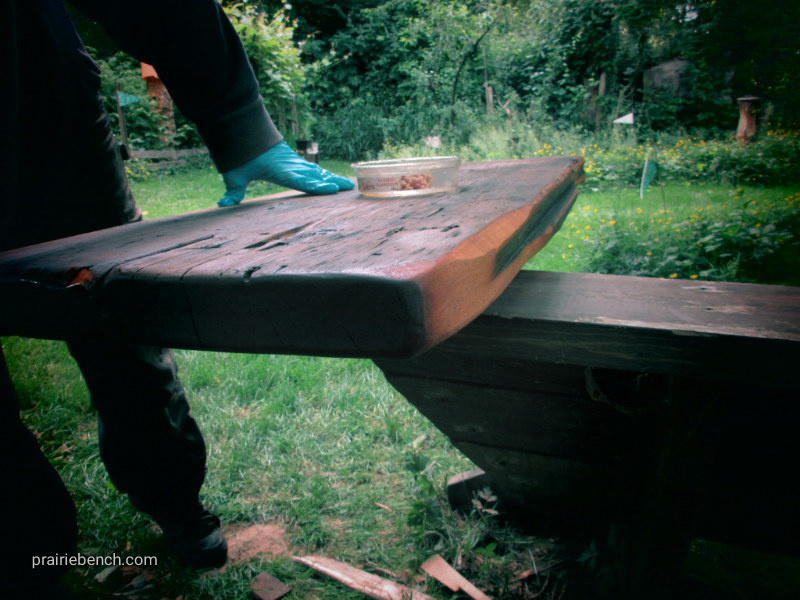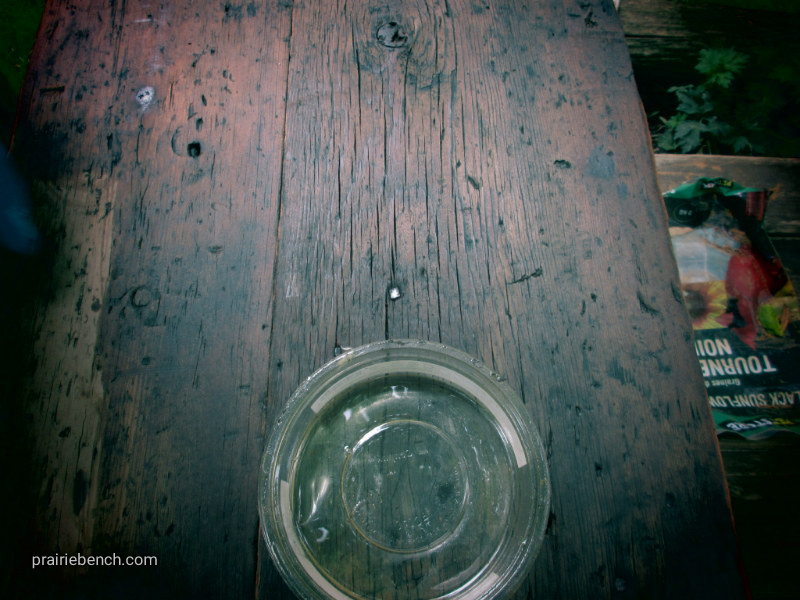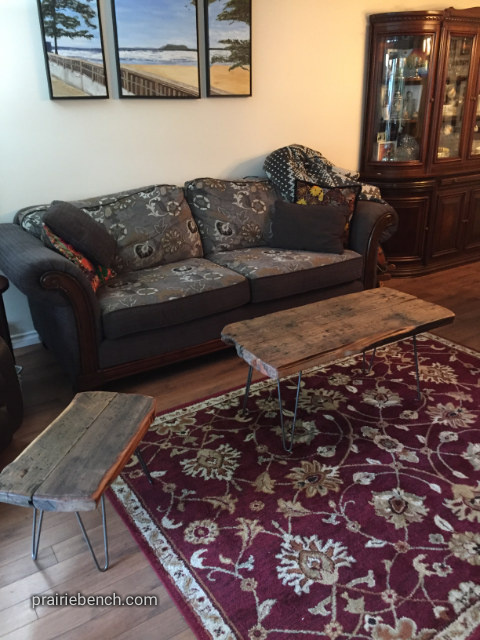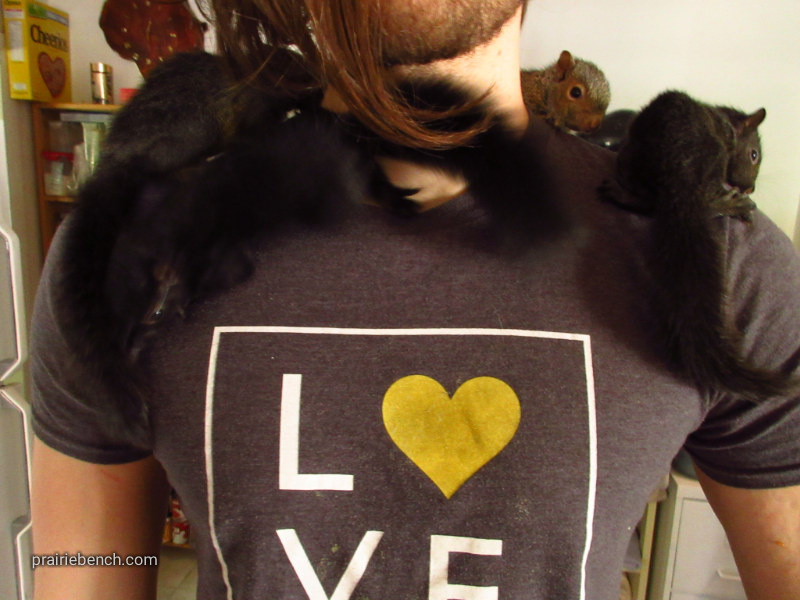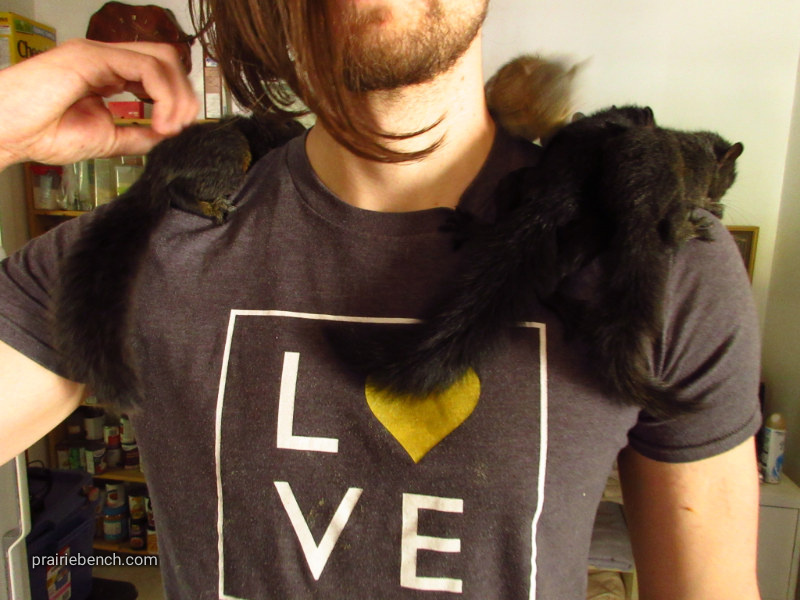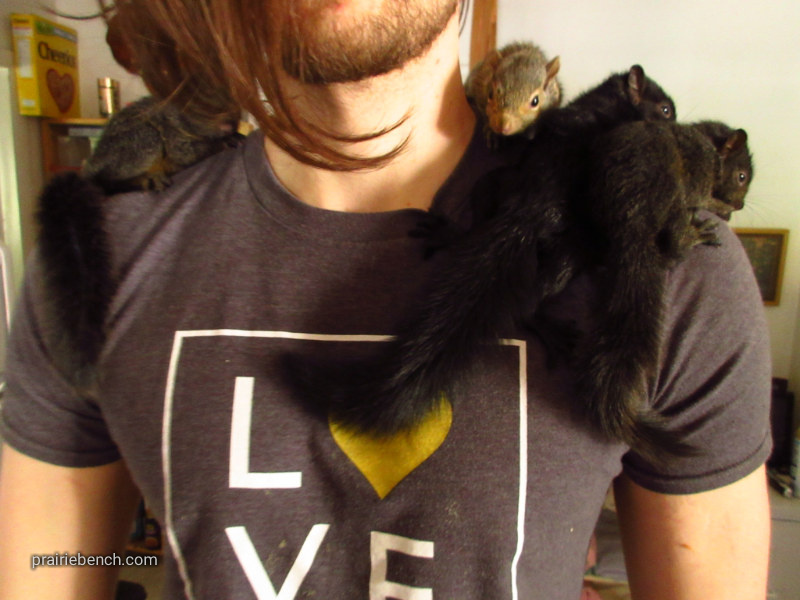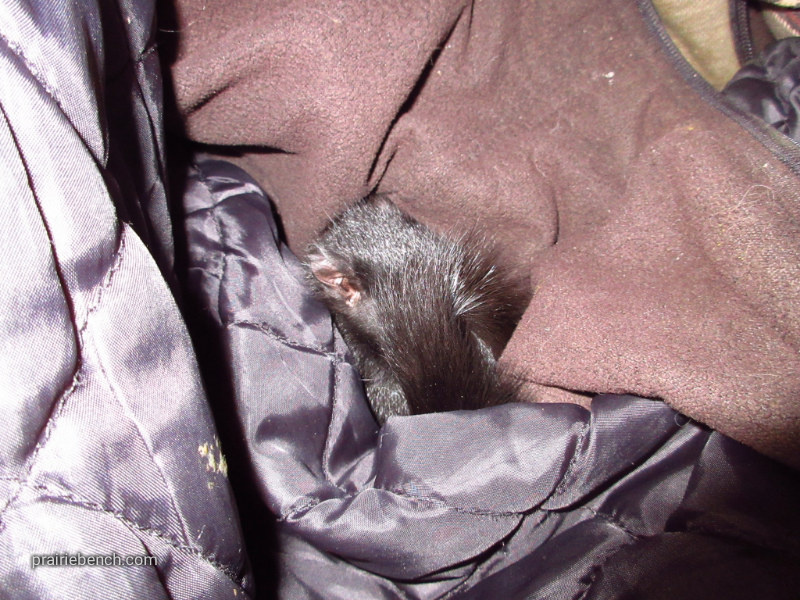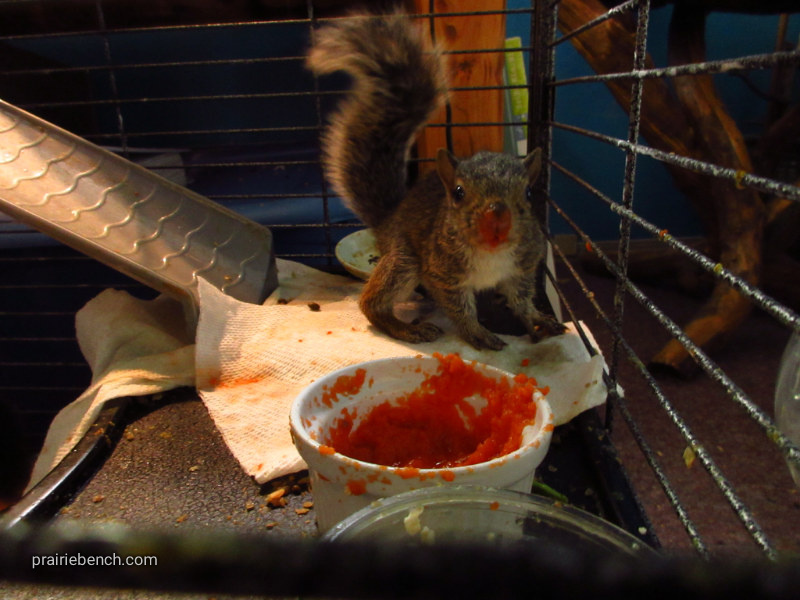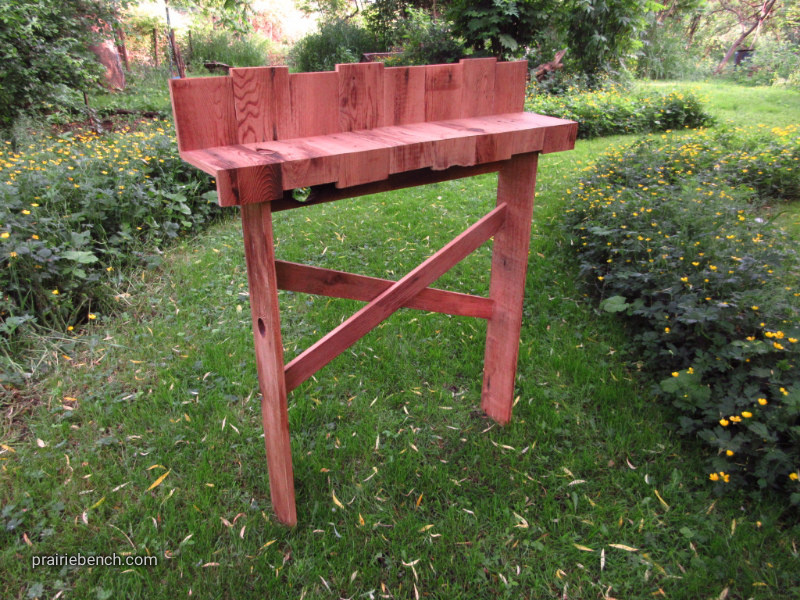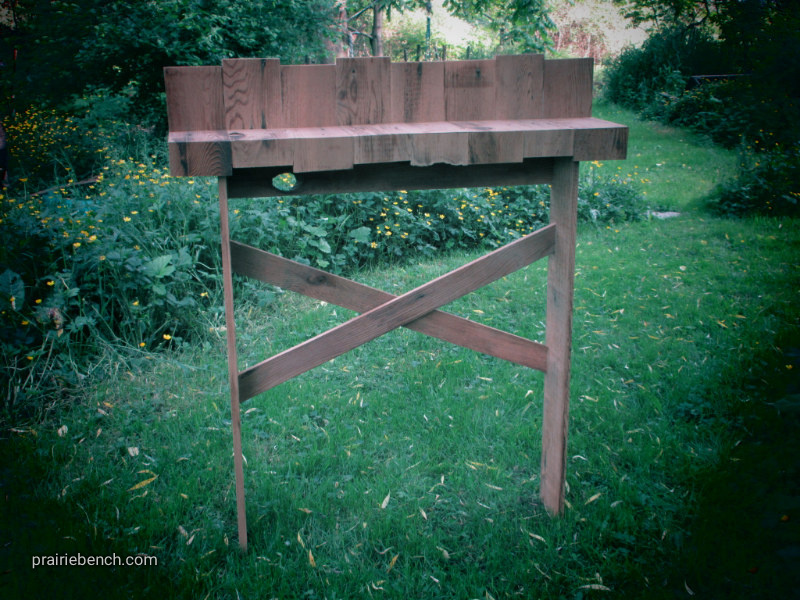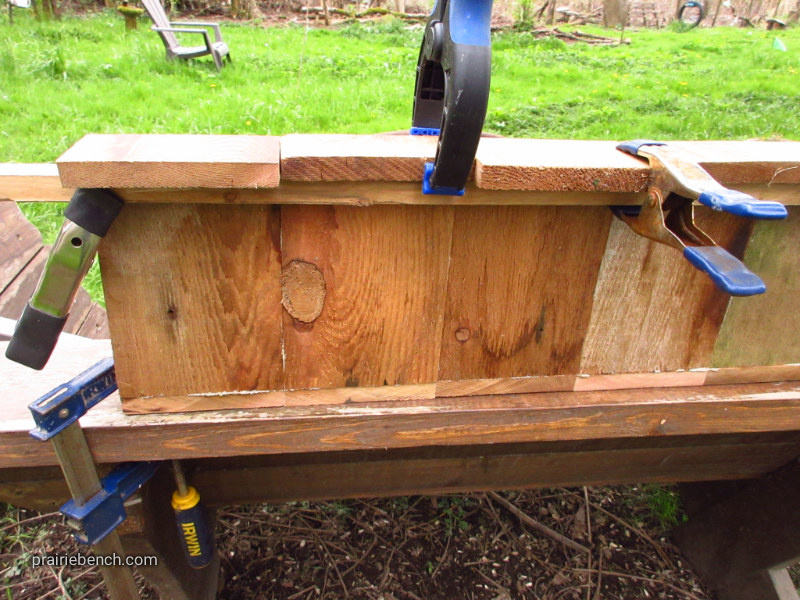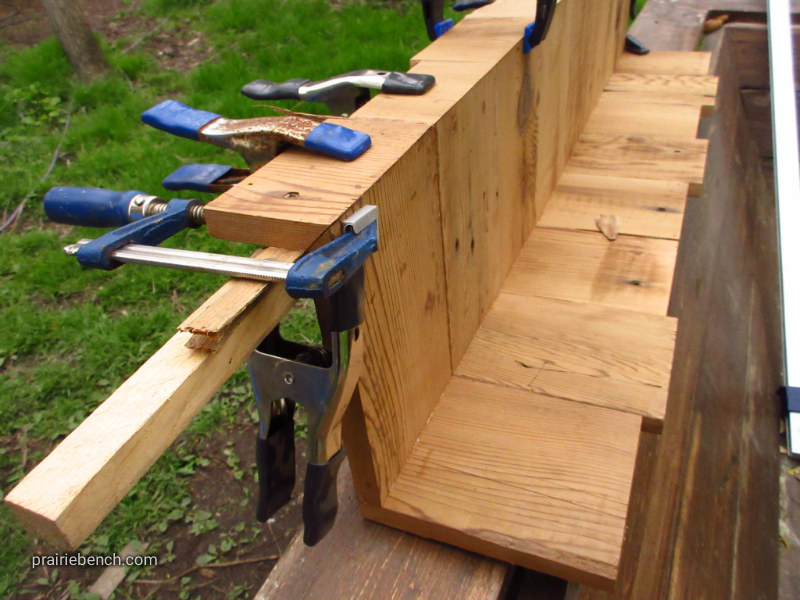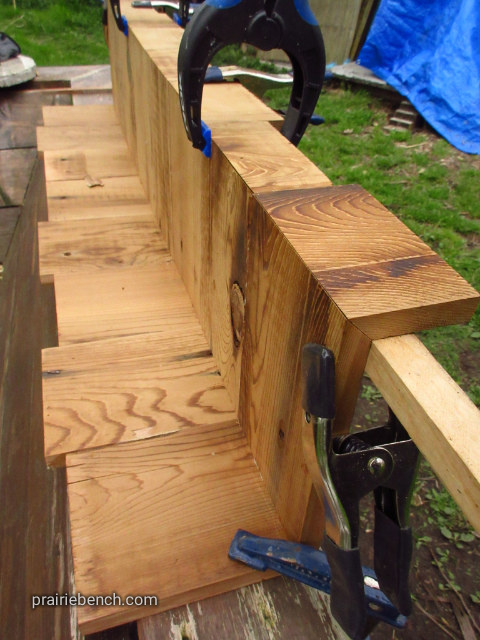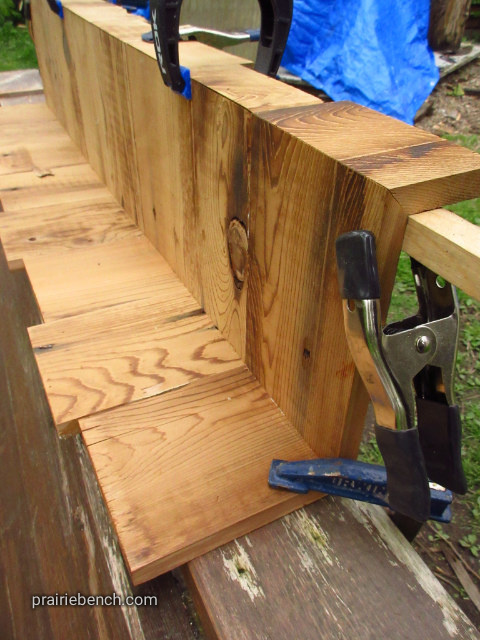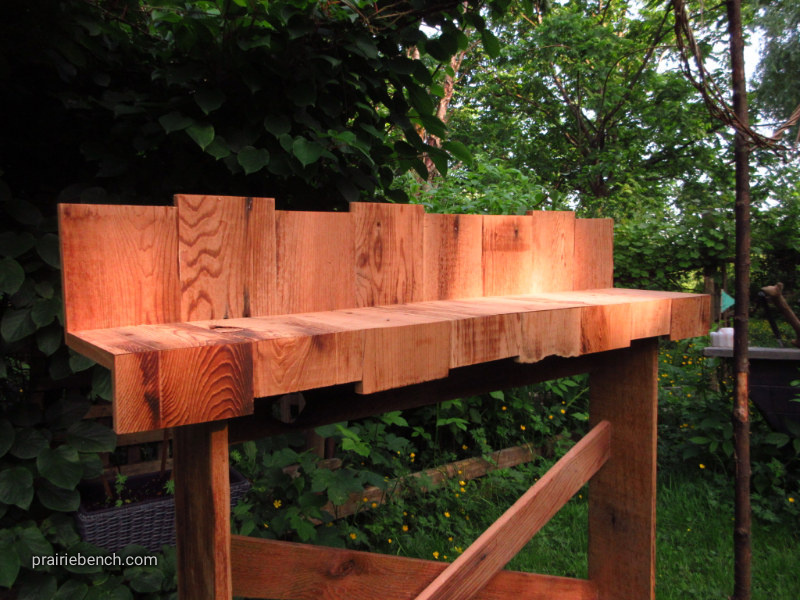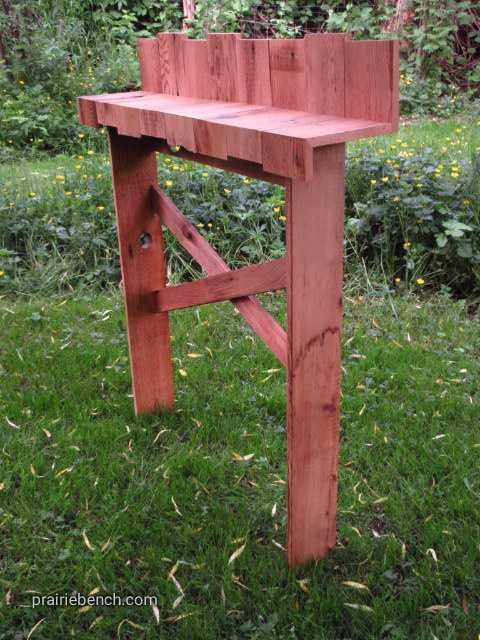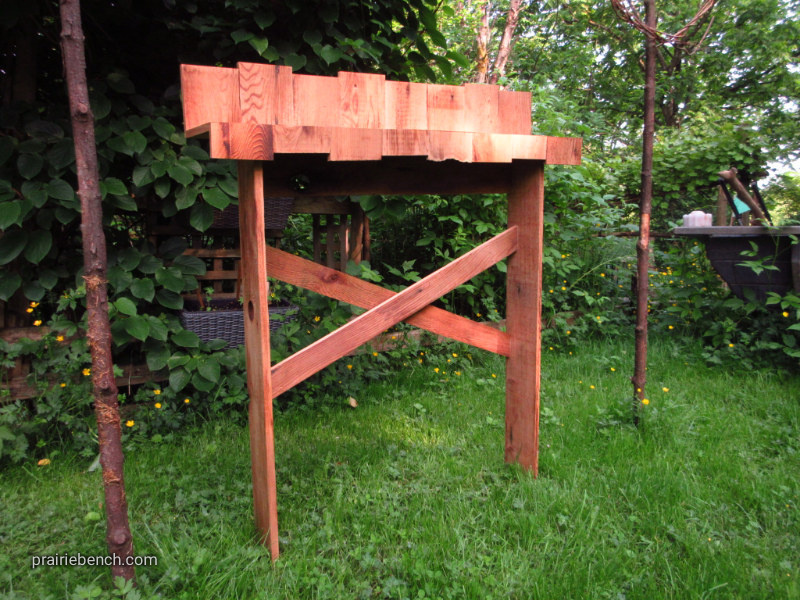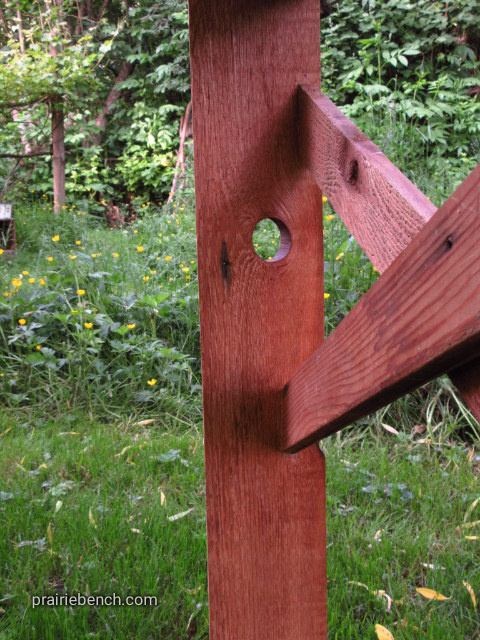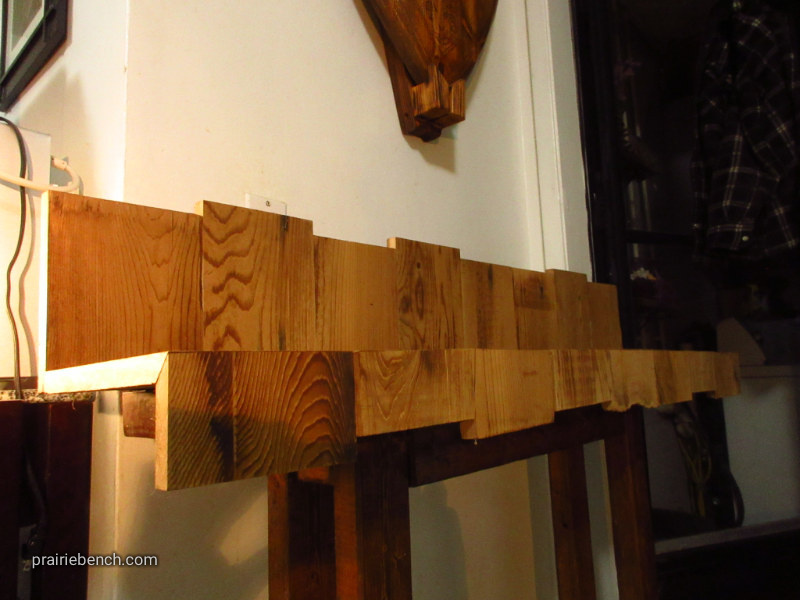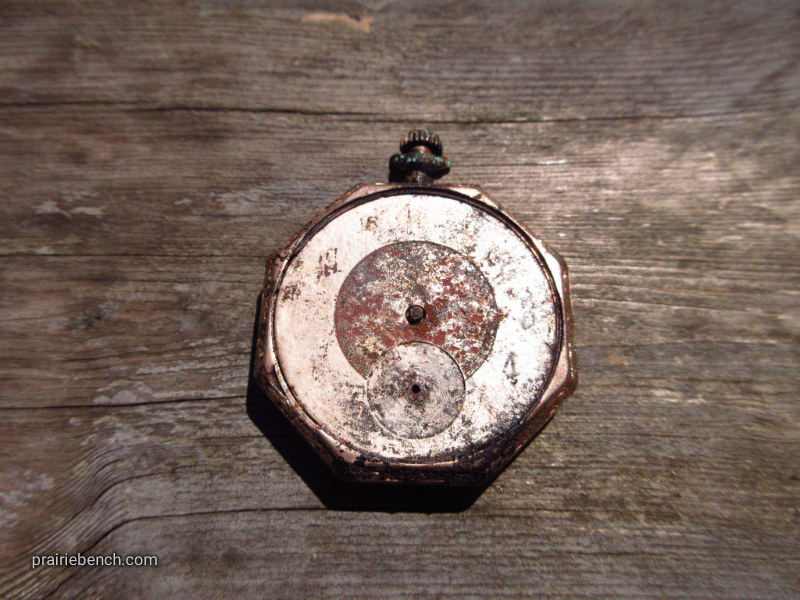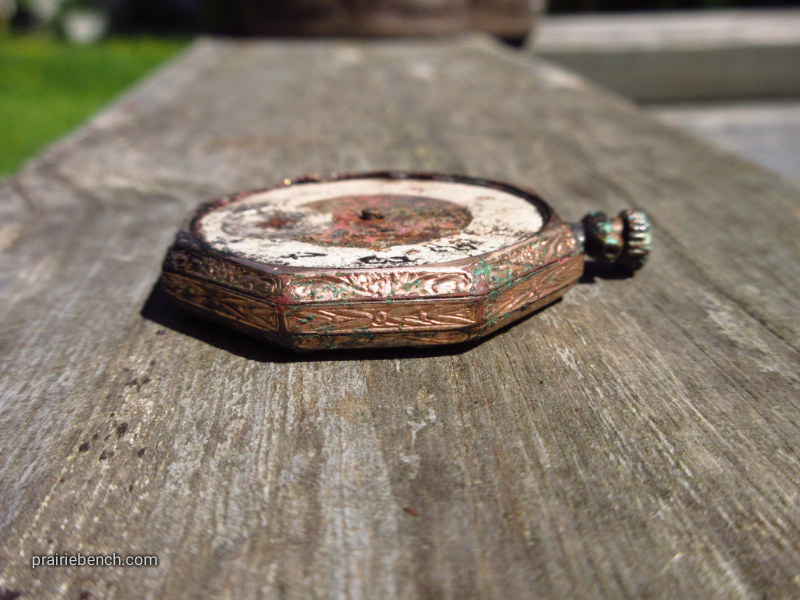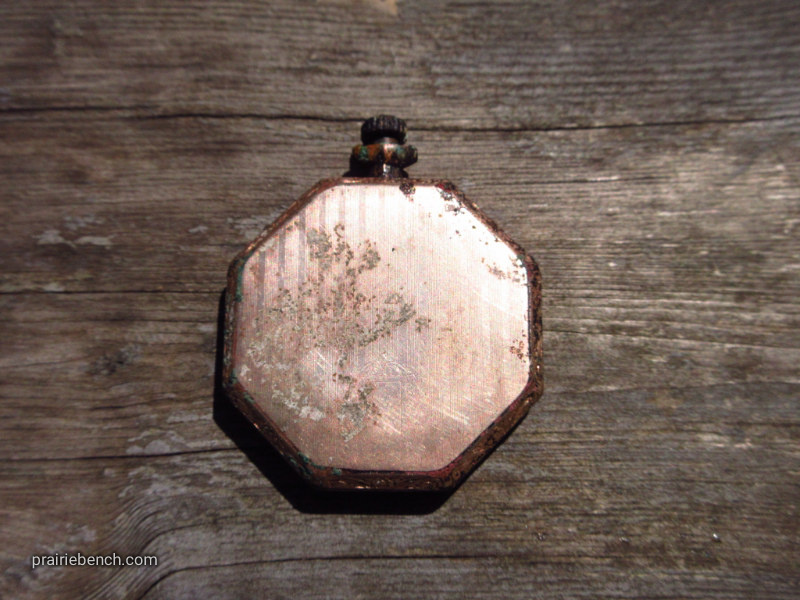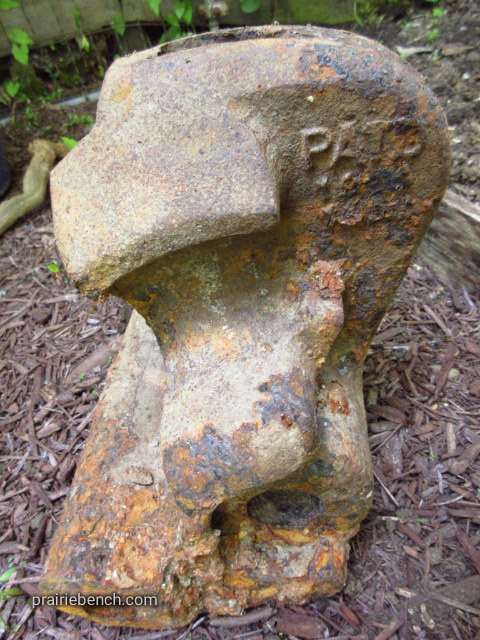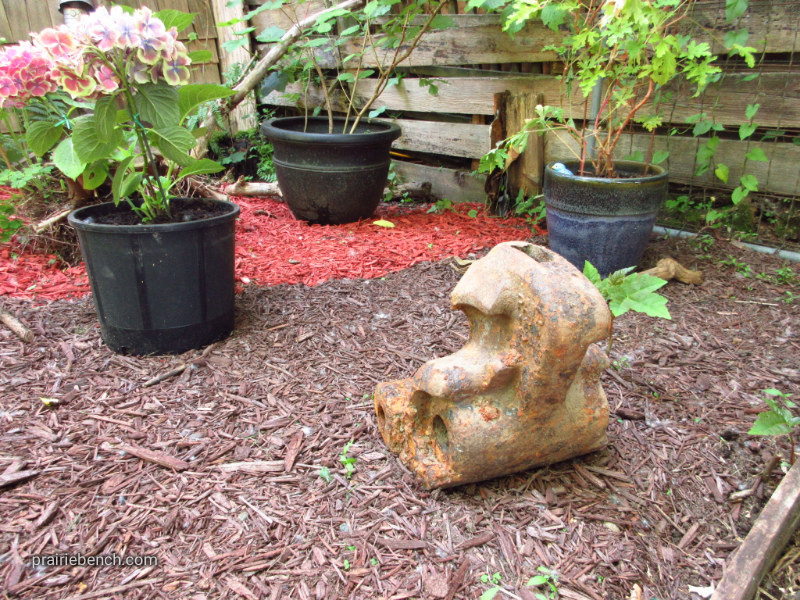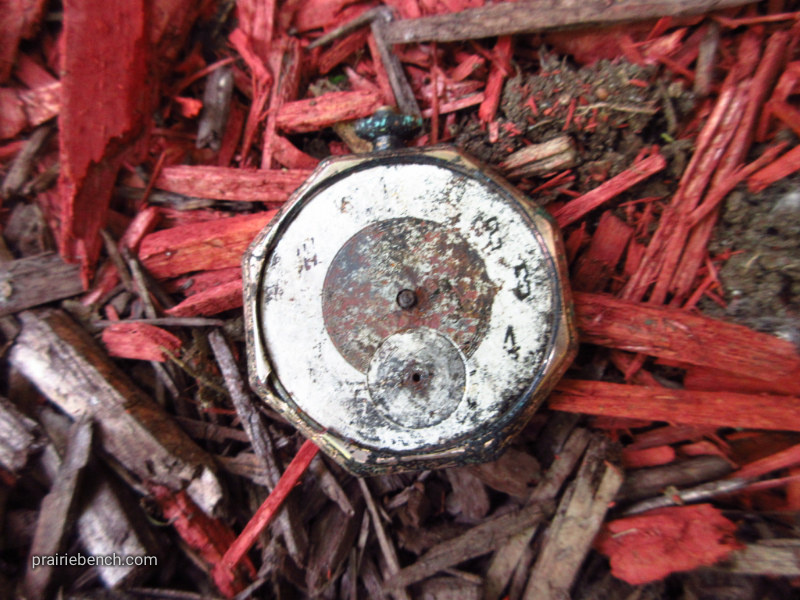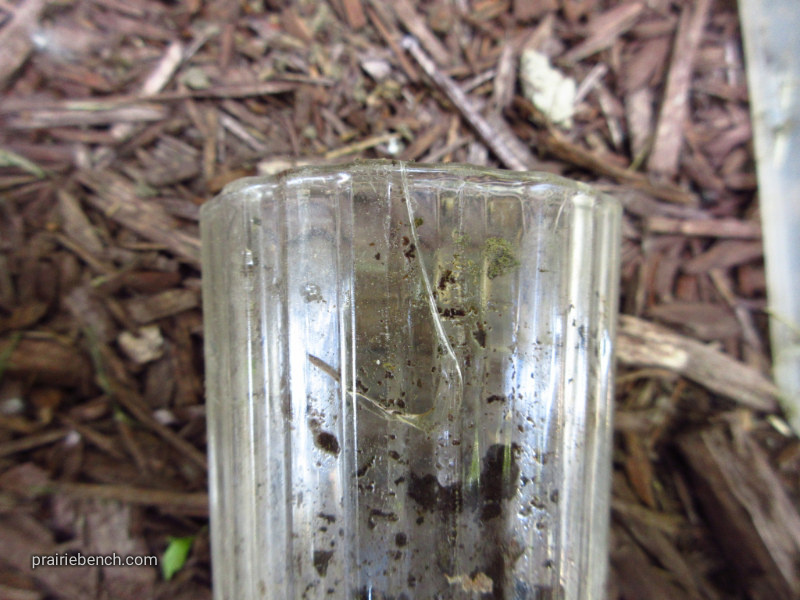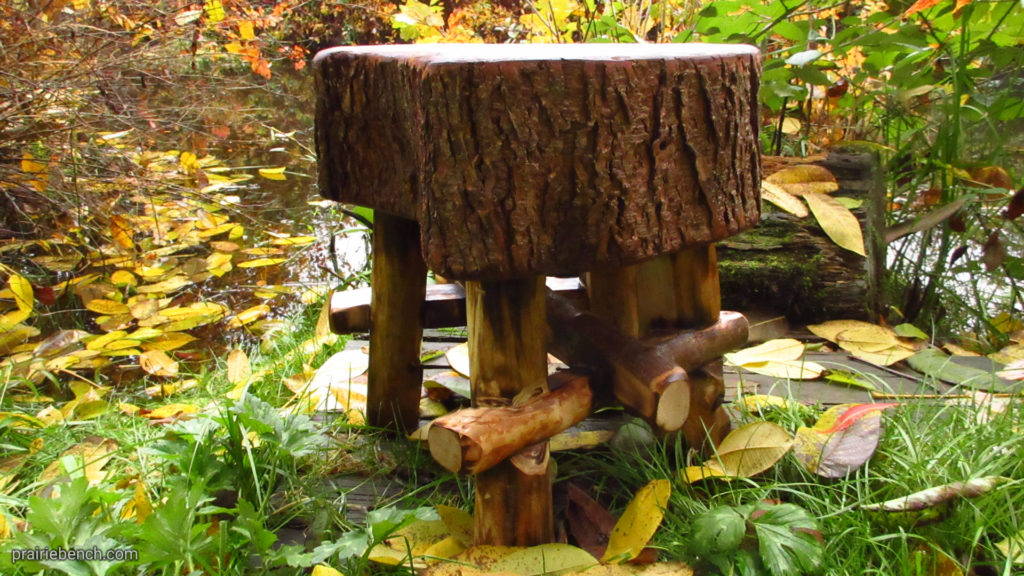
At 18″ tall (45 cm dining chair height) this little stool is the perfect size for woodcutters to enjoy a quiet lunch. But looks are deceiving, despite its small stature, this stool weighs 40 lbs (18 kgs). That’s a heavy slab of fir. The legs are also bulky, approximately 3″ thick lengths of maple.
.
The joints are notched out then pounded together to form a tight fit when the fibres dry. The legs have dowels inset and the fir top is pounded down with a heavy mallet. Some glue was added to the maple joints to prevent splitting. There are four legs, with pairs connected by a trestle. The pairs are then joined with a third trestle. The front legs have a wider gap to take advantage of the odd shaped round, with a narrower gap at the back of the stool. The design takes a lot of adjusting in the mitre saw to fit all pieces together. It’s patient work. This is a very sturdy stool. The wood is thick and heavy, and this becomes obvious sitting on it.
.
The fir top was rough sanded with 60 grit and then the entire round was smothered in left over clear oil finish to seal up any cracks and prevent new ones. Once dry, the edge was ground to a smooth, touchable surface and the entire top was coated in water-based polyurethane semi-gloss finish. The legs were quite light in color so a torch was used to add some artificial age. The result is a warm, soft appearance that begs to be handled. The bark is left on.
The goal was to give some reverence to a nice fir round we found in a wood pile. It had a unique crescent shape probably formed from this tree growing too close to a neighboring tree. The wood came from a farm down the road and the maple is grown at our site. We grow pine, hazelnut, maple, fir, spruce, cedar, apple, cherry, plum, walnut, hawthorn and mountain ash.
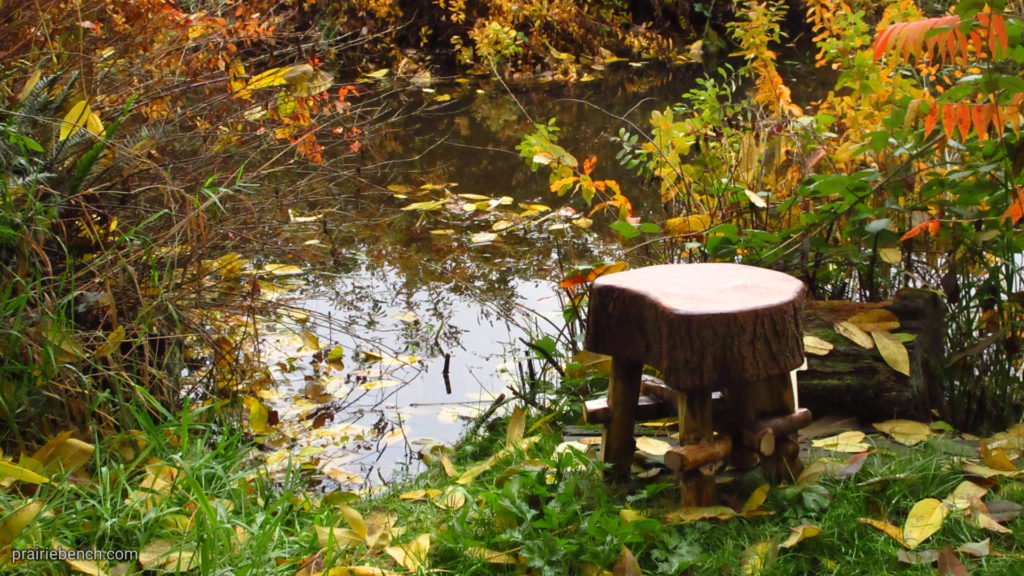
#10-22-19 is spoken for and will find a home in a cozy cottage near a hearth. It will be a great stool to perch on in a big housecoat and warm up by the stove. For these images, we took the stool out back to a creek under a Tree of Heaven. The autumn colors make a great setting to sit, have a snack, and watch rush hour… Prairie Bench style.

